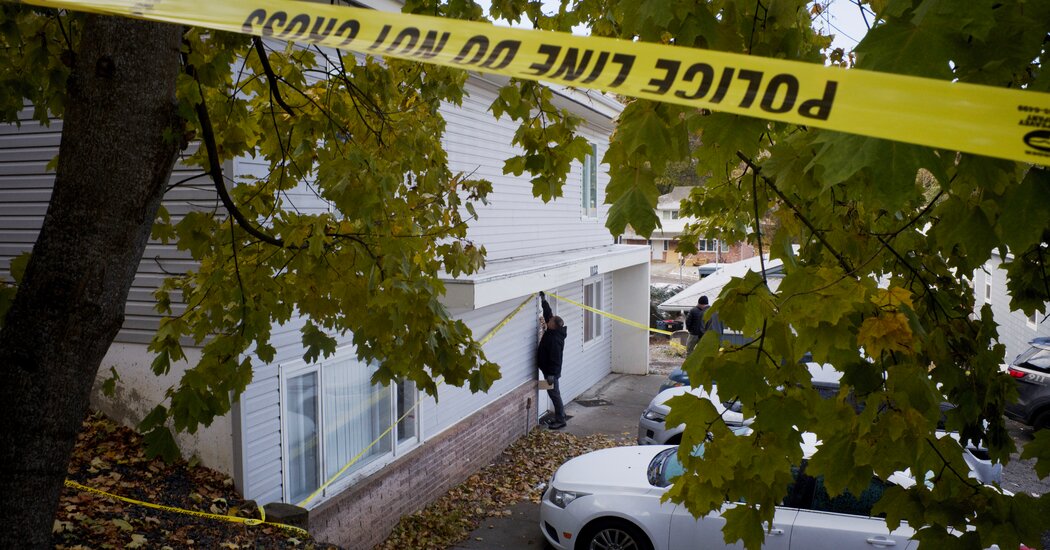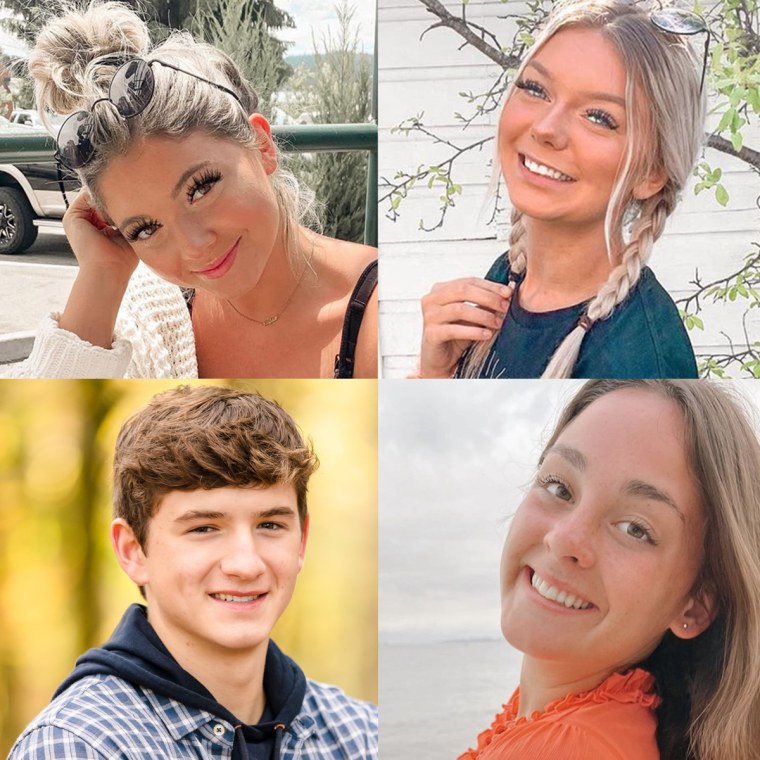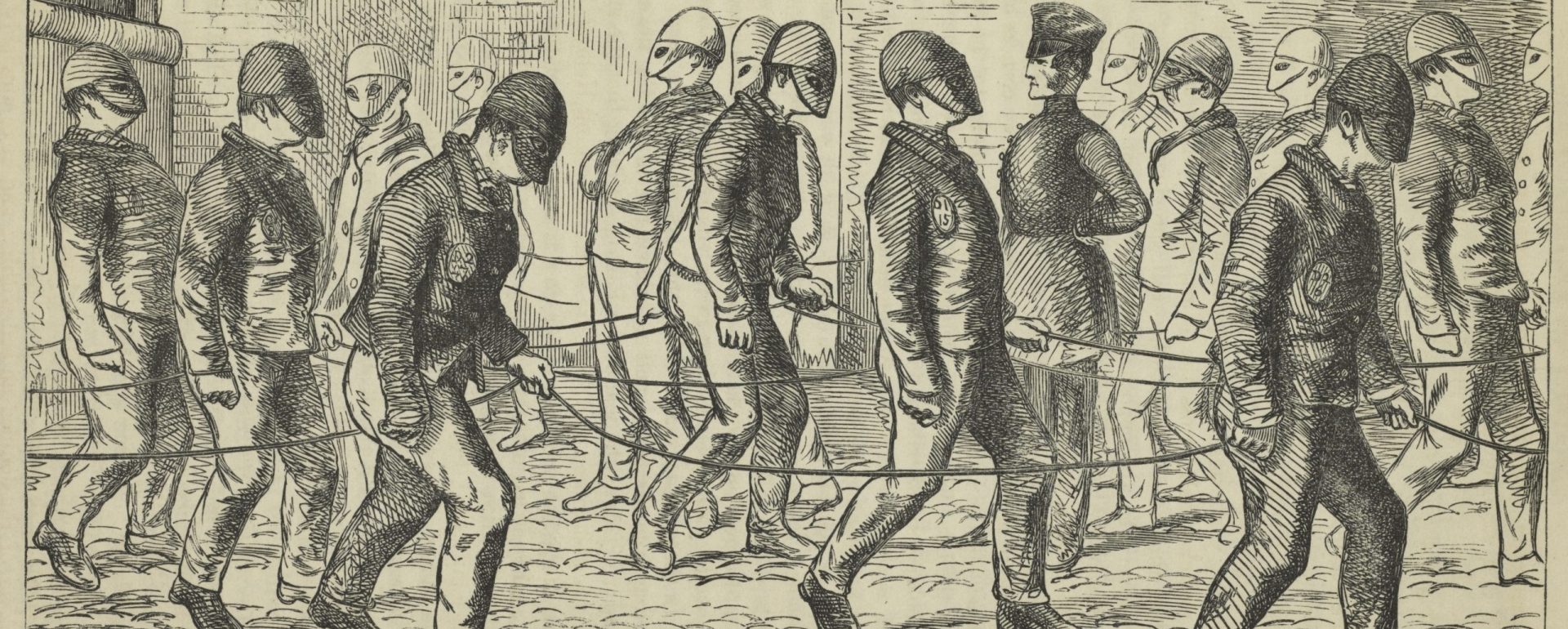
Image provided by NBC News
Throughout this class, we focused on how criminals were represented through art, movies, journals, and more. However, we also explored that the physical “criminals” themselves may not be the only ones to blame. Social media is the largest criminal mastermind in our modern era, affecting not just cases but families, victims, and innocent bystanders. This will focus on the negative effects social media has had on the University of Idaho Quadruple murders.
Background
On November 13th, 2022, students Ethan Chapin, 20, Kaylee Goncalves, 21, Xana Kernodle, 20, and Madison Mogen, 21, all came home from two separate parties around 1:40 am, where their roommates Dylan Mortensen and Bethany Funke were at home asleep. A 911 call came in around 12 pm from a random phone number for an unconscious person, yet when police arrived, they walked into a brutal crime scene. Dylan and Bethany were the sole survivors of a quadruple murder in a small town in Idaho. Police say this was one of the worst crime scenes they have seen in a while, with blood everywhere and numerous stab wounds on all of the bodies, yet not a piece of evidence to help figure out who could have committed this crime. Upon arrival, the two surviving roommates were cleared within hours, and the unknown phone number ended up coming from a friend of the victims who did not live in the house with them. However, although the girls and phone number were cleared, that officially left the police with no suspects and no lead.
(For more information on the case, click https://abcnews.go.com/US/idaho-college-murders-timeline-events/story?id=93575278.)

Top Left: Kaylee Goncalves. Top Right: Madison Mogen. Bottom Left: Ethan Chapin. Bottom Right: Xana Kernodle
Introduction
It is no secret that the media has had a significant impact on the criminal justice system and crime scene investigation starting as early as the 1800s. There have been positive effects, such as bringing awareness to the public, discovering witnesses, solidifying a suspect as a perpetrator, and much more. However, the adverse effects, such as false information, conspiracy theories, false statements, and instilling fear in the public, outweigh the positives in most cases, especially in recent news, the University of Idaho quadruple murder. Social media platforms such as TikTok, Youtube, and news channels and their creators are the perpetrators behind these negative impacts. It is nearly impossible to entirely cut the media out of the crime world as the genre of “true crime” is on the rise, and with the technology today, it is impossible for information not to be spread.
What is “True Crime?”
True Crime: “Books and movies about real crimes that involved real people.”
Cambridge Dictionary
TikTok and Crime
TikTok is a social media platform where anyone can post videos for up to 3 minutes and share them to the app. Some TikTokers have more followers than others and use those followers to express their opinions and get their fans to agree, and spread those opinions to their fans, friends, and family. These followers are gained through following trends and posting about popular topics, such as true crime and the University of Idaho murders. It can be compared to a domino effect in both positive and negative ways.
An example of a negative impact from TikTok is the posts from Ashley Guillard, a tarot card TikToker from Texas, posted to her public TikTok with over 115,000 followers; according to TIME, stated that Rebecca Scofield, an associate professor in the history department at the university, was the sole attacker in this murder simply because Guillard felt Scofield had a motive (Sarnoff). Guillard went on to post not just one video about her theory but 50 videos explaining why Rebecca Scofield was the attacker and the story behind her motive (TIME Magazine). These videos began on or around November 22, 2022, according to the lawsuit, that has since been made available to the public and continued to be posted past when Bryan Kohberger, the sole suspect police identified, was arrested for the crimes. These TikToks began to include pictures of Scofield off of the university website starting on or around November 24, 2022, which Scofield clearly did not consent to (Law&Crime). Scofield received thousands of hateful messages, including death threats, all because of Guillard’s posts (Sarnoff). Scofield had sent two cease-and-desist letters to Guillard, which were both ignored, as well as placed into a protection program, according to TIME Magazine.
Below are a series of TikToks posted by Gulliard throughout the investigation. These videos were taken directly from Guillard’s TikTok account @ashleyisinthebooks and are still available on the app through TikTok. All rights go to Ashley Guillard.
What can be done?
There are methods of limitations that can be implemented to protect the victims, families, and outcomes of these cases while also not limiting the freedom and creative liberties of the media. One limitation could be a grace period where information that is not released by the police is not released by the media, which would give time to contact the families, secure the crime scene, and begin the investigation without the media jumping steps ahead and creating false statements. Once the grace period is over, another limitation of what can be shared can be made. Another potential limitation is better monitoring on social media sites to ensure any false facts and fake news that are posted are taken down, and the individual who posted the facts is warned and then, if they were to re-offend, removed from the app. It is not the right of an American citizen to be on a social media app, meaning if warned and then they do it again, their account can be taken down, but it is their right to free speech, so we can not fully limit what they say.
Discussion Questions:
- What are other potential limitations that can be placed to protect victims, families, and innocent third parties in terms of social media postings?
- What are other examples of social media impacting crime scene investigation in a negative way?
- The quote ‘Curiosity kills the cat” is a well-known quote describing the negative effects of curiosity, do you feel this can relate to the “true crime” genre?
References:
Emily Shapiro. “Idaho College Murders: The Complete Timeline of Events.” ABC News, ABC News Network, 18 Jan. 2023 https://abcnews.go.com/US/idaho-college-murders-timeline-events/story?id=93575278.
Burga, Solcyre. “Idaho Murders Show the Cost of the U.S. True Crime Addiction.” Time, Time, 25 Jan. 2023, https://time.com/6250031/idaho-murders-true-crime-addiction/
Marisa-Sarnoff. “Texas Tiktoker Insists a Jury Will Take Her Side in Defamation Case by Idaho Professor over Stabbing Deaths of University Students.” Law & Crime, Law & Crime, 29 Dec. 2022, https://lawandcrime.com/crime/texas-tiktoker-insists-a-jury-will-take-her-side-in-defamation-case-by-idaho-professor-over-stabbing-deaths-of-university-students/.

